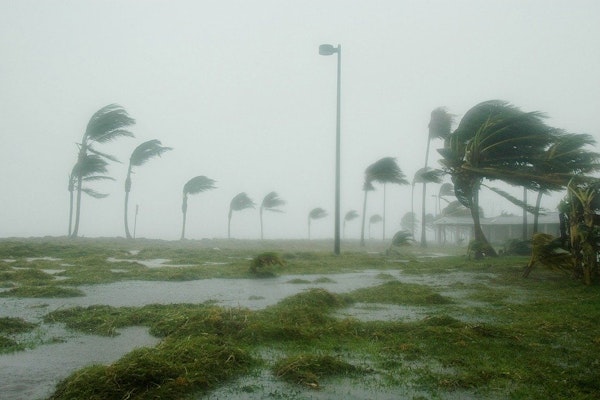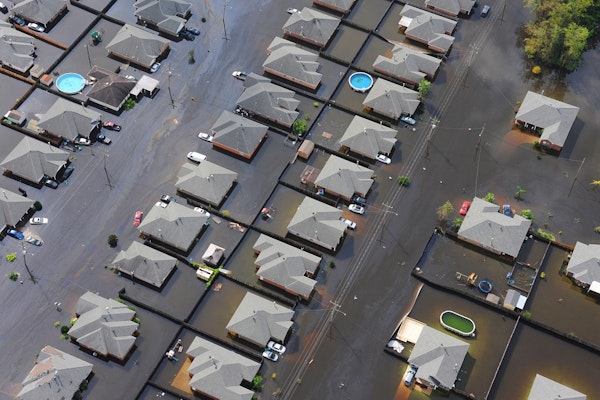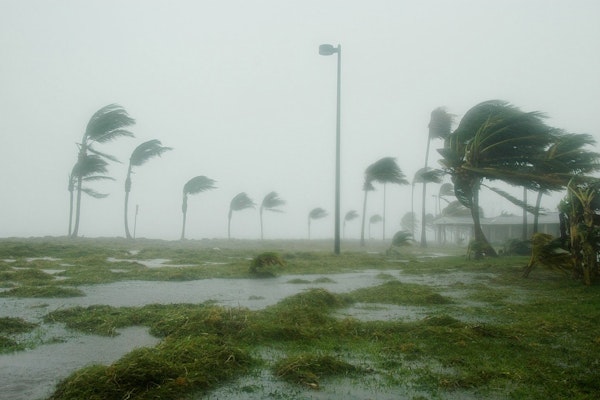
Rising Inland Flood Risk Demands Urgent Attention in U.S.
The Insurance Information Institute’s latest report highlights the increasing flood risks faced by inland areas due to shifting weather patterns. Hurricanes, tropical storms, and thunderstorms are pushing the boundaries of flood-prone regions, underscoring the need for better insurance coverage, flood resilience, and mitigation strategies to bridge the protection gap in non-coastal communities.
November 14, 2024
Catastrophe
Legislation & Regulation
Property
Risk Management
Florida
Georgia
Kentucky
New Jersey
New York

Florida Hurricane Damage Claims Reach $4.775 Billion After Hurricanes Helene and Milton
Insurance claims in Florida from Hurricanes Helene and Milton have reached $4.775 billion, up $169 million from last week’s total. The storms have left extensive residential and commercial property damage, according to the Office of Insurance Regulation.
November 12, 2024
Catastrophe
Insurance Industry
Legislation & Regulation
Property
Florida
Georgia
North Carolina
South Carolina
Tennessee

Texas A&M Research Links Climate Change to Increased Hurricane Rainfall in the Southeast
A Texas A&M study shows a nearly 20% increase in extreme rainfall during storms like Hurricane Helene, linking climate change to intensified flooding risks across the southeastern United States.
October 28, 2024
Catastrophe
Property
Risk Management
Florida
Georgia
North Carolina
Texas

Widespread Flooding from Hurricane Helene Spotlights Inland Insurance Gaps
The devastation from Hurricane Helene reveals a significant inland flood-protection gap, particularly in flood-prone communities without sufficient insurance coverage, where misinformation and funding challenges further slow recovery efforts.
October 28, 2024
Catastrophe
Insurance Industry
Legislation & Regulation
Risk Management
Florida
Georgia
Kentucky
New Jersey
New York

Workers’ Comp Ghost Policies Are Increasing Risks for Small Businesses
Ghost policies, a type of fraudulent workers’ comp coverage, are leaving businesses and employees exposed to high risks, especially in states where such policies remain legal.
October 21, 2024
Fraud
Legislation & Regulation
Risk Management
Workers' Compensation
Colorado
North Carolina

Natural Catastrophe Losses in 2024 Near Average Amid Escalating Late-Season Storm Risks
Insured losses from global natural catastrophes exceeded the 10-year average, driven by frequent storms and floods, while total economic losses for 2024 remained slightly below average.
October 17, 2024
Catastrophe
Insurance Industry
Property
Risk Management
Florida
North Carolina
Tennessee
Virginia

Hurricane Forecasts Face Backlash as Meteorologists Battle Misinformation and Threats
Despite the increasing accuracy of hurricane forecasts, meteorologists are facing growing threats, conspiracy theories, and public distrust fueled by misinformation on social media.
October 17, 2024
Catastrophe
Risk Management
Technology
Alabama
Florida
Iowa
North Carolina

Louisiana’s Auto Insurance Affordability Challenges Persist in 2022
Despite rising incomes, Louisiana remains the least affordable state for personal auto coverage across the South and U.S., with premiums nearly 40% above the national average.
October 15, 2024
Auto
Legislation & Regulation
Litigation
Risk Management
Florida
Louisiana
Mississippi
North Carolina

Climate Change Intensifies Hurricane Helene’s Impact on Coastal and Inland Communities
Hurricane Helene, a Category 4 storm, caused catastrophic flooding and destruction from Florida’s coast to the Southern Appalachians. Research shows climate change intensified its rainfall, winds, and flooding risks.
October 11, 2024
Catastrophe
Legislation & Regulation
Property
Risk Management
Florida
Georgia
North Carolina
South Carolina
Tennessee

Hurricane Milton Could Deplete U.S. Insurers’ Catastrophe Budgets, Global Reinsurers Likely to Endure
Hurricane Milton, a Category 5 storm expected to strike Florida, threatens to deplete U.S. property/casualty insurers’ catastrophe budgets and test global reinsurers’ limits, though most are expected to weather the storm without significant capital impacts.
October 10, 2024
Catastrophe
Insurance Industry
Property
Risk Management
Florida
Georgia
North Carolina
South Carolina

Waffle House Index Signals Severe Impact from Hurricane Milton in Florida
The Waffle House Index, a quirky yet reliable gauge of storm severity, shows widespread closures across Florida as Hurricane Milton approaches, warning of significant damage and disruption.
October 9, 2024
Catastrophe
Property
Risk Management
Technology
Florida
Georgia
North Carolina
South Carolina

Federal Flood Maps Lag Behind Climate Disasters, Leaving Millions at Risk
As climate-intensified storms expose the limitations of FEMA’s outdated flood maps, millions of Americans may face flood risks without adequate insurance protection, especially in areas prone to heavy rainfall.
October 9, 2024
Catastrophe
Legislation & Regulation
Property
Risk Management
Florida
Georgia
North Carolina
South Carolina

Hurricane Milton Threatens Central Florida with Potential Direct Hit
Hurricane Milton, set to make landfall as a Category 3 storm, could bring catastrophic impacts to Florida’s Gulf Coast, particularly the Tampa area, just two weeks after Hurricane Helene’s devastation.
October 9, 2024
Catastrophe
Insurance Industry
Property
Risk Management
Florida
Georgia
North Carolina
South Carolina

Hurricane Milton Strengthens to Category 4, Poised for Midweek Florida Landfall
Hurricane Milton, now a powerful Category 4 storm, is set to make landfall midweek in Florida, bringing life-threatening storm surges, heavy rain, and strong winds.
October 7, 2024
Catastrophe
Legislation & Regulation
Property
Risk Management
Florida
Georgia
North Carolina
South Carolina

Flood Insurance Program Struggles with Rising Repeat Payouts
As flood risk intensifies, the National Flood Insurance Program is issuing more repeat payouts, with severe repetitive loss properties surging across the U.S., especially in coastal areas vulnerable to storms.
October 7, 2024
Catastrophe
Legislation & Regulation
Property
Risk Management
Florida
Louisiana
New Jersey
North Carolina





